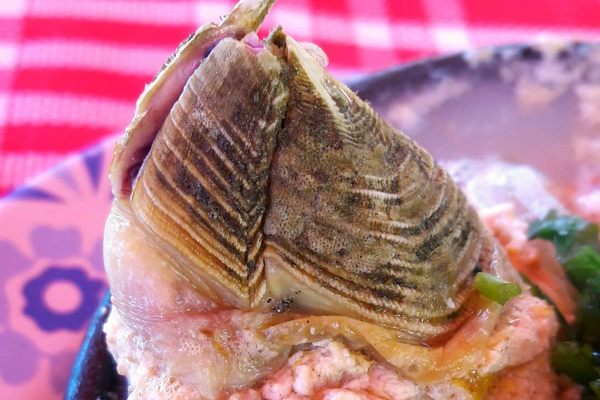Travel agents have used coconuts to capture a vision of island fantasy for decades—the blended piña colada, self-contained in its husk. A bra made from polished coconut shell. One palm tree, trunk bent from the weight of bulbous coconuts in a welcoming arch, hanging over a tropical shoreline.
But South America’s palm trees provide coconuts that stop growing long before they reach a substantial cup size. Known as coquitos, these tiny treats are the full-sized fruits of the Chilean wine palm—a tree Darwin himself once called “very ugly.” According to varying reports, these gargantuan plants can live from a century to a millennia.
Locals enjoy the flavor both raw and cooked, though some tasters say the skin leaves a residue on the tongue. The fruit’s firm, white insides have a crunchy sweetness, reminiscent of an almond. And unlike a mature coconut, a whole coquito nut can be eaten in one bite. (Just be sure to crack its shell open first.)
Like its full-size brethren, these marble-sized coconuts are put to myriad uses. Chileans add them to cookies, cakes, ice cream, and jellies for texture and nuttiness. Peruvians incorporate them in traditional ranfañote, a coquito- and salty cheese-topped bread pudding. Puerto Ricans also know coquito, but as something different. It’s a cousin of eggnog, made with coconut milk on the island.
Written By
 rachelrummel
rachelrummel
Sources
- drinks.seriouseats.com/2011/12/rompope-and-coquito-recipe-mexican-eggnog-and-puerto-rican-coconut-eggnog.html
- www.specialtyproduce.com/produce/Baby_Coconuts_6541.php
- winestainedcloth.wordpress.com/2009/05/28/coquito-nuts-anyone/
- www.villagevoice.com/2009/10/14/strange-snacks-of-the-world-baby-coconuts/
- www.arkive.org/chilean-wine-palm/jubaea-chilensis/
- www.thestar.com/life/food_wine/2014/01/15/splurge_baby_coconuts_perfect_as_dessert_garnish.html
- powo.science.kew.org/taxon/urn:lsid:ipni.org:names:131713-2















